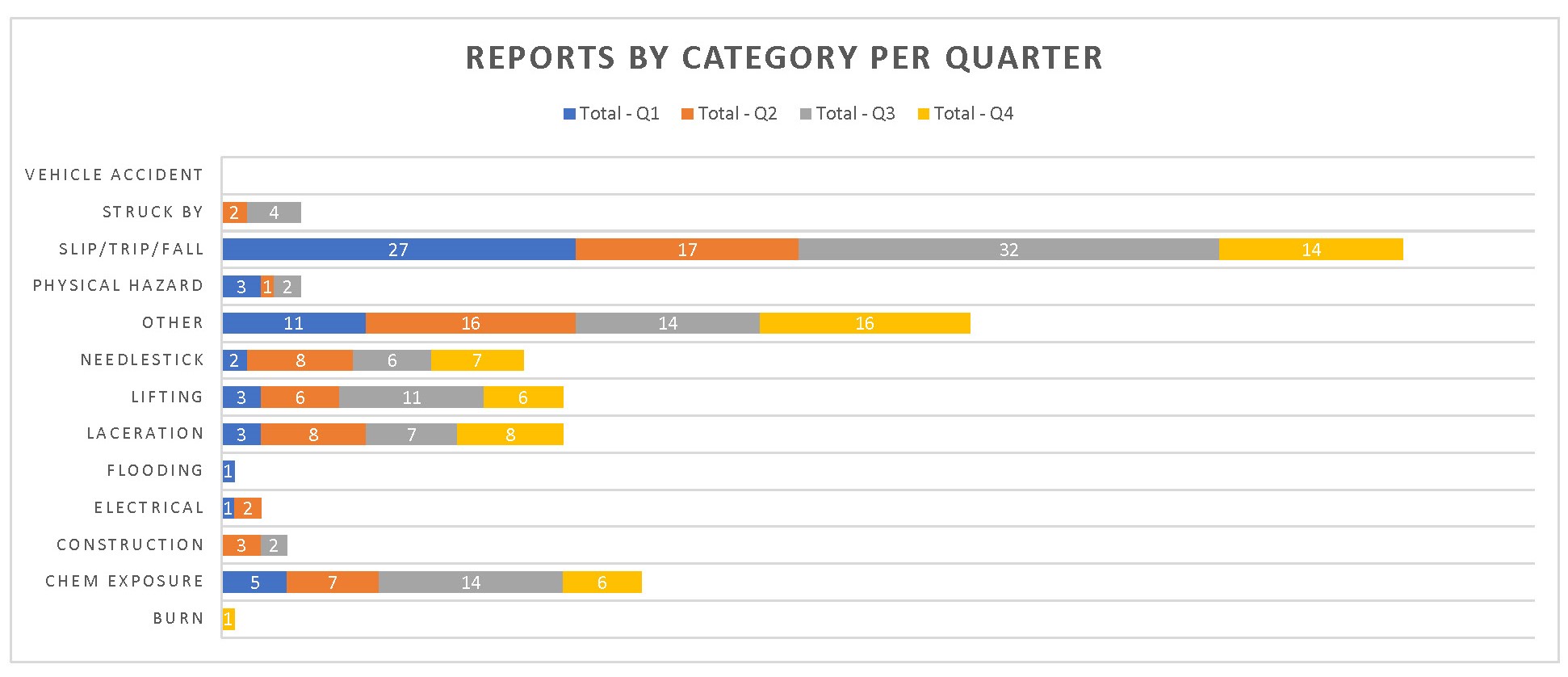Culture of Safety
What is a Culture of Safety?
Leadership at The University of New Mexico (UNM) is committed to the health and safety of all University members. The main goal of this commitment is to reduce injuries among University members on campus. Achieving this requires a culture in which each member of the campus community takes responsibility for the health and safety of themselves and those around them. Instilling a strong “Culture of Health and Safety” supports the UNM 2040 Goal 4 Objective 1 of having a high-quality and sustainable workforce.
University leadership expects that each member of the campus community will follow health and safety rules, regulations, and best practices. However, instilling a strong culture of health and safety requires more than simply following rules; it requires mindful and conscientious attitudes, behaviors, and practices among University members at all levels. Through diligent use of the four core elements listed below, UNM will improve its culture of health and safety and in turn, reduce injuries.
The four core elements of a strong culture of health and safety include:
- Leadership commitment
- Stakeholder engagement
- Continuous improvement through learning and training
- Enforcement of health and safety rules
UNM leadership is committed to elevating the culture of health and safety to a core value of the institution. It has established clear lines of authority from the UNM president through management.
Engagement
To engage stakeholders, the Environmental Health and Safety Department (EHS) collaborates with our sister departments under the Executive Vice President of Finance and Administration, as well as with all academic departments, staff, faculty, and students to create a variety of both basic and general, as well as customized, specific safety programs and training. Additionally, EHS engages stakeholders through training, collaboration, and rewards for mindful safety practices.
Continuous Improvement
EHS safety programs are continuously improved by using data collection, industry best practices, stakeholder input, and incident investigations. EHS also collaborates with stakeholders to develop and continuously improve its internal safety programs and processes. Despite EHS’ continuous improvements, it is nearly inevitable that incidents will occasionally occur. As such, EHS has implemented an easy-to-use incident reporting system and a straightforward investigation process for determining root causes and preventing future incidents. This knowledge is then shared with stakeholders via Lessons Learned on the EHS website and direct communication with the affected parties.
Lastly, a robust, established, and routine inspection process coupled with fair and collaborative enforcement is used to assess and improve safety performance across campus. Additionally, all stakeholders have been granted the authority to stop any work they feel presents an imminent threat to the health and safety of others. If Stop Work authority is used, EHS offers full support in the enforcement of health and safety rules.
Part of this Continuous Improvement cycle is to gather feedback and reward positive behavior/training within labs and makers' spaces across campus. These include raffles during training, raffles from outreach events, and raffles for post-training feedback. Current award winners include:
- Laboratory Training and Outreach Raffles:
- Chemical and Biological Engineering
- Mechanical Engineering
- Earth and Planetary Sciences
- Center for Water & the Environment
- Civil, Construction & Environmental Engineering
- Maxwell Museum
- Chemistry
- Chemical and Research Laboratory Supplier (CRLS)
- Physics and Astronomy
- Neurology
- Biochemistry & Molecular Biology
- Center for High Tech Materials (CHTM)
- Post-Training Feedback:
Data Collection
To measure the improvement of UNM’s culture of health and safety, EHS has implemented robust data collection and analysis procedures. The department began by identifying leading indicators such as training delivered, and lagging indicators such as violations or injuries. Training efficacy is vital for the delivery of appropriate information. EHS has set out to measure effectiveness by comparing inspection deficiencies identified over time, and by conducting follow-up surveys on training. EHS has partnered with Risk Services, Employee Occupational Health and Safety (EOHS), UNM Medical Group, Student Health and Counseling (SHAC), and others to improve incident reporting to capture lagging indicators. In addition to these internal efforts and partnerships, EHS is also proactively seeking the services of an outside consultant with experience in conducting safety culture assessments. The consultant will deliver a strategic plan for making actionable changes after assessing the maturity of UNM’s culture of health and safety. By measuring leading indicators, and lagging indicators, and knowing where we stand concerning our culture of health and safety, EHS intends to direct resources most powerfully and efficiently to improve campus safety.
2023 Accident and Incident Data:

Know Your Rights
Safety is a shared responsibility. Each person plays a critical role in protecting their safety as well as the safety of others. Visit the OSHA webpage for a complete list of employee rights and responsibilities.
